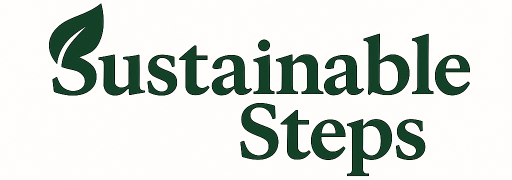Introduction
Today’s consumers, investors, and regulators are increasingly focused on more than just profits—they’re asking how businesses impact the planet, their people, and society at large. This shift has led to the rise of ESG reporting, a framework that measures how companies perform in three key areas: Environmental, Social, and Governance.
While ESG reporting is often associated with large corporations, small businesses can also benefit by demonstrating transparency, building stakeholder trust, and preparing for future regulatory requirements.

In this guide, we’ll break down what an ESG report is, why it matters, and how to create one that fits your small business—no matter your size or industry.
What Does ESG Stand For?
ESG stands for:
- Environmental: How your business impacts the natural environment.
Examples: carbon footprint, energy use, water management, waste reduction. - Social: How your business supports employees, customers, communities, and supply chains.
Examples: workplace diversity, labour practices, community engagement, health and safety. - Governance: How your business is managed and held accountable.
Examples: ethical leadership, transparency, data privacy, compliance, board diversity.
An ESG report brings together data, policies, and performance in these three areas, offering a holistic view of your company’s non-financial impact.
Why ESG Reporting Matters for Small Businesses
You don’t need to be a multinational corporation to gain from ESG reporting. Small businesses increasingly face expectations from:
- Customers who prefer ethical and sustainable brands
- Suppliers and partners who vet ESG practices before collaboration
- Investors who want to manage risk and support responsible businesses
- Employees who value purpose, diversity, and well-being
- Regulators with growing disclosure requirements
An ESG report shows that your business is forward-thinking, transparent, and committed to sustainable practices.
What Goes into an ESG Report?
While large companies use complex frameworks (like GRI, SASB, or TCFD), small businesses can start with a simplified structure focused on relevance and impact.
A basic ESG report includes:
- Introduction and Business Overview
- Who you are, what you do, and why ESG matters to your business.
- Environmental Section
- Energy consumption and efficiency
- Carbon emissions or offsetting initiatives
- Waste management practices
- Use of sustainable materials or suppliers
- Social Section
- Workplace culture, safety, and training
- Diversity and inclusion efforts
- Community involvement or donations
- Customer feedback and satisfaction
- Governance Section
- Leadership structure
- Business ethics policies
- Data protection measures
- Compliance with relevant laws and standards
- Goals and Metrics
- ESG targets for the year ahead
- Key performance indicators (KPIs) tracked
- Progress from previous reporting periods (if available)
- Appendices or Supporting Data
- Charts, audits, certifications, or policy documents
How to Prepare an ESG Report for Your Small Business
1. Define Your ESG Priorities
Start by identifying which ESG topics are most relevant to your business and stakeholders. You don’t need to cover everything—focus on areas where you have the most impact.

Questions to ask:
- What do our customers care about?
- Where do we consume the most resources?
- What social issues do we influence (e.g. hiring, safety, community)?
- How are we currently governed or held accountable?
2. Gather Data and Policies
Collect information on your environmental usage, social practices, and governance policies.
Tip: You likely already have data available in:
- Utility bills (for energy or water use)
- HR or payroll systems (for diversity, benefits, training)
- Accounting software (for donation or supplier spending)
- Policy documents or contracts
3. Set Goals and Metrics
Choose a few measurable goals for the next 12 months.
Examples:
- Reduce electricity usage by 10%
- Achieve 40% gender diversity in leadership roles
- Implement a formal code of conduct for staff and suppliers
Simple metrics make it easier to track progress and demonstrate accountability.
4. Create the Report Structure
Use a clear format with headings and short paragraphs. Visuals such as tables, graphs, or infographics make the report more engaging and digestible.
5. Publish and Share
You can publish your ESG report:
- On your company website
- As a downloadable PDF
- In your annual report or investor materials
- As part of your sales or onboarding pack
Make sure to promote it on social media and share it with key partners and clients.
ESG Reporting Tools and Templates for Small Businesses
You don’t need expensive consultants to get started. Here are some accessible tools and frameworks:

- B Impact Assessment – Free tool to measure your impact in various ESG areas
- Sustainable Development Goals (SDGs) – Align your ESG actions with UN goals
- GRI Standards (Lite use) – Use simplified GRI principles for structure
- Sustainability Victoria Templates – Government-supported reporting tools for Australian businesses
Tips for First-Time ESG Reporters
- Keep it honest – It’s okay if you haven’t achieved every goal yet. Transparency builds credibility.
- Focus on progress – Show what you’ve done and where you’re headed.
- Involve your team – ESG reporting is stronger when it reflects diverse voices and departments.
- Review annually – A yearly report shows accountability and commitment over time.
Conclusion
An ESG report is more than a compliance task—it’s a strategic tool that helps small businesses demonstrate their values, manage risk, and stand out in a purpose-driven market.
By focusing on the most relevant issues, collecting basic data, and communicating clearly, you can prepare a meaningful ESG report—even with limited resources. Over time, this process will strengthen your brand, attract responsible partners, and guide more sustainable business decisions.
At Sustainable Steps, we believe that small businesses play a powerful role in shaping a better future. Start where you are, use what you have, and take one sustainable step at a time.
